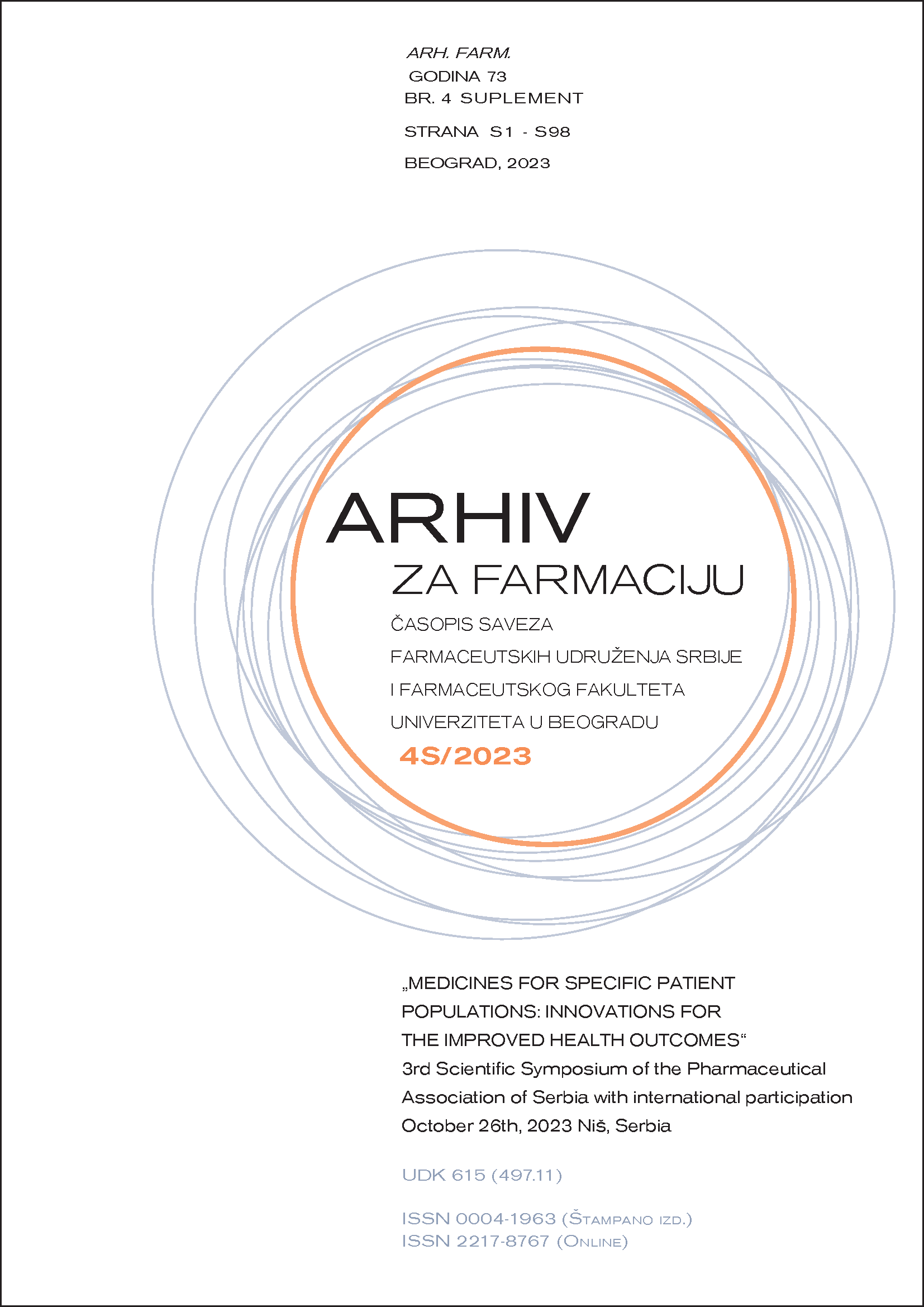FORMULATION AND CHARACTERIZATION OF DESLORATADINE MINI-TABLETS OBTAINED BY PHOTOPOLIMERIZATION 3D PRINTING TECHNIQUE
Abstract
3D printing as an additive technology represents a simple and economically acceptable alternative to conventional methods and offers the possibility of obtaining innovative dosage forms and individualizing therapy according to the specific needs of patients. (1). The aim of the research was to formulate and manufacture desloratadine mini-tablets (DSL) using digital light processing (DLP) 3D technique based on a successive layering mechanism. Mini-tablets of DSL (10%,w/w) were selected as a dosage form suitable for the pediatric population, particularly because of its flexible dosing. The formulation was prepared with 1% photoinitiator and 10% water, while poly(ethylene glycol) diacrylate and poly(ethylene glycol) 400 were present in a mass ratio of 1:1. The created 3D models (4.00×3.00 mm) were successfully printed using WanhaoD8 printer. Yellow-orange mini-tablets with uniform shape, thickness and mass (4.16±0.06×2.24±0.04 mm; 42.61±1.15 mg) were produced. Incomplete extraction of DSL from the cross-linked polymer matrix resulted in a relatively low content of the drug in the mini-tablets compared to the theoretical content (72.14±1.04%) (2). The dissolution test showed that 50.29±0.14% of DSL was released after 45 minutes in 0.1M hydrochloric acid medium and reached a plateau after 4 hours (81.19±0.63%). The results of DSC analysis showed amorphisation of the drug, while observation of the cross-sections of printed mini-tablets under a polarizing microscope indicated the presence of a layered structure. The DLP technique has the potential to ensure the rapid production of mini-tablets with suitable physicochemical properties and to enable modified release of the drug.
References
1. Palekar S, Nukala PK, Mishra SM, Kipping T, Patel K. Application of 3D printing technology and quality by design approach for development of age-appropriate pediatric formulation of baclofen. Int J Pharm. 2019;556:106-116.
2. Xu X, Robles-Martinez P, Madla CM, Joubert F, Goyanes A, Basit AW, et al. Stereolithography (SLA) 3D printing of an antihypertensive polyprintlet: Case study of an unexpected photopolymer-drug reaction. Addit Manuf. 2020;33:101071.

